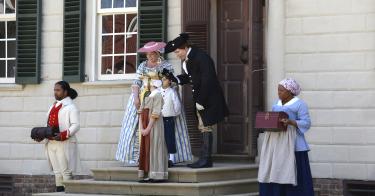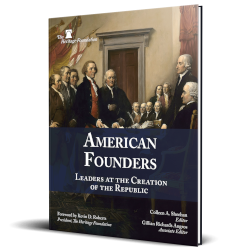Last month, President Donald Trump signed an executive order targeting revisionist history and divisive ideologies at our national parks and the Smithsonian museums. Whatever one thinks of the scope of that EO, it does aim to address a real problem. Under the guise of telling a more inclusive, equitable and accurate history, the American story at present is being distorted at museums and historic sites across the nation.
The EO supplies a few examples of discordant notes at the Smithsonian, such as “hard work” being labeled an aspect of “White culture.” This is no happenstance. In 2022, Lonnie Bunch, secretary of the Smithsonian Institution, co-chaired a task force to produce a report on Excellence in diversity, equity, accessibility and inclusion, which begins: “DEAI is integral to excellence in museum practice. FULL STOP.” The American Alliance of Museums is responsible for the report and further claims that museums should “champion an anti-racist movement” to create a “more just and equitable world.” The AAM is composed of 35,000 museums and museum professionals.
Funding for the report was provided by the Andrew Mellon, Alice L. Walton and Ford Foundations. In 2023, Mellon committed $500 million to transforming our nation’s monuments landscape, in part because there are no “U.S.-born Latinx, Asian, Pacific Islander, or self-identified LGBTQ+ people” in the top 50 individuals most frequently memorialized.
>>> Purging DEI From the Smithsonian Is No Easy Task
Considering the positions of those involved, the number of members in the AAM and the magnitude of funds at play, efforts to promote DEI at museums and historic sites are indeed widespread.
At the heart of this conflict is a fundamental divide regarding the purpose of museums and historic sites. Traditionally, those institutions have aimed at promoting civic education and preserving the American heritage. A growing trend, however, is to use them to further social justice, engage in activism and tell a more “inclusive” and “equitable” version of history.
Each side claims to offer a more accurate version of American history. Let’s examine the evidence.
Both Mount Vernon, home to George Washington, and Montpelier, home to James Madison, have incorporated tours and exhibits on slavery, detailing the realities of the institution and individual stories of enslaved people.
Mount Vernon has done so in a modest and fact-driven manner without straying from its core mission of presenting the accomplishments of George Washington. Montpelier, on the other hand, has no exhibits dedicated to the seminal contributions of James Madison. While some of the exhibits on slavery are informative, others contain distortions and omissions. One panel on the first 18 presidents and their relationship with slavery notes that some presidents (Jefferson and Madison) never freed their slaves but fails to mention that Washington did, while another indicates that the enslaved population in New Hampshire in 1790 was 11% when the actual figure was 0.11%.
>>> Post-Modern Mischief at America’s National Parks and Museums
In the Museum and Education Center at Mount Vernon, students are confronted with decisions George Washington himself faced, and advisers like Alexander Hamilton and James Madison step forward to voice their opinions. The exercise is about genuine education: demonstrating complexity and tutoring young people in the art of making prudential choices.
In contrast, Montpelier’s exhibit for children (funded by the Institute of Museum and Library Services) asserts that, “[b]ooks are great tools for introducing young children to topics like race, identity, and justice.” One of the available books contains “imagination exercises” that encourage children to put themselves in the role of a slave-owner, whipping an individual until his “flesh cried blood.”
Rather than promoting liberal education, which encourages children to think for themselves and aims at truth, Montpelier fails to present all the facts and aspects of the American story—both the triumphs and the failures—favoring an ideological telling that fosters resentment.
While both Mount Vernon and Montpelier could be considered as telling a more “inclusive” version of American history, only Mount Vernon’s telling is accurate. Montpelier is misconstruing American history and promoting activism, providing an example of the false revisionist version of history Trump’s executive order aims to combat.
Some of the exhibits at the Smithsonian museums, as well as statements by Smithsonian leadership and the overall trajectory of the museum industry, raise legitimate concerns that America’s public museums will follow the model of Montpelier over Mount Vernon.
This piece originally appeared in The Advocate




